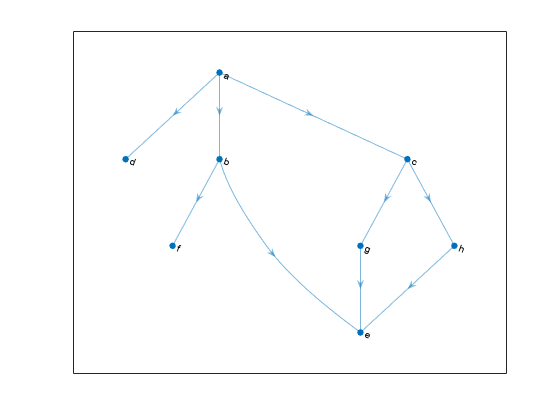successors
Node successors
Syntax
Description
Examples
Input Arguments
Output Arguments
Tips
For multigraphs with multiple edges between the same two nodes, the output of
outedgescan be longer than that ofsuccessors, since there can be multiple outgoing edges to some of the successors.
Version History
Introduced in R2015b

